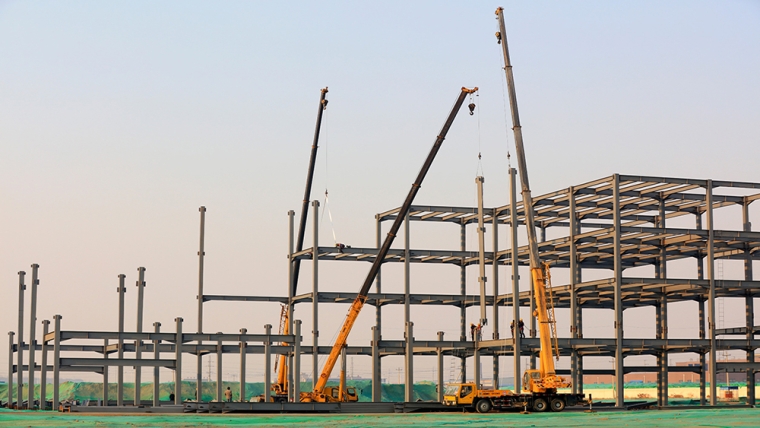
After Chinese GDP grew by only 3% in 2022, one would have expected the government to set a growth target of at least 6% for this year. In fact, virtually no market forecast projects a lower rate. Yet, at last month’s National People’s Congress, outgoing Premier Li Keqiang revealed in his final Government Work Report that the government was aiming for growth of about 5%, the lowest target of his tenure.
Under former Premier Wen Jiabao, from 2003 to 2013, China maintained an official growth target of 8%. But, in his final Government Work Report, Wen lowered the target for the first time, by 0.5 percentage points. The reason was obvious: Wen wanted to help cool the then-overheated economy. Surprisingly, Wen’s successor, Li, effectively treated 7.5% as a ceiling for growth during his ten-year term.
In fact, since 2014, Premier Li has consistently revised China’s growth target a half-point downward from the previous year’s target, whether through a categorical adjustment or the introduction of a lower range. With GDP growth repeatedly falling short of the official target, one cannot help but assume that this was a response to the economy’s actual performance. If existing targets are not being met, why would the government raise them?
Over the past three decades, growth targets have, to some extent, become a self-fulfilling prophecy. From 1993 to 2013, the central government’s growth target was practically interpreted as an indication of what the central government hoped for. That’s why the actual rate of growth was much higher than the government targets. Yes, there were structural forces working in China’s favour during this period. Local governments faced political incentives to implement their growth strategies – including fixed-asset investment and industrial planning – to meet the central government’s priorities and expectations.
Just as rising growth targets encourage local governments to pursue growth more aggressively, falling growth targets can discourage such efforts, leading to lower growth rates that, in turn, spur the government to reduce targets further, causing a downward spiral. All of this makes it difficult to estimate China’s potential rate of growth, which is supposed to be what anchors economic policy. Why did that happen?
China’s slowing GDP growth over the past decade is a reflection not of flawed policy, but of a new policy approach. From 1993 to about 2013, GDP growth was the central government’s primary objective and guided policymakers’ approach to macroeconomic management. This objective – which local governments were tasked with realising – led to the acceleration of public capital formation, improvements in the investment environment, the crowding in of private capital, and the creation of more productive capacity.
This approach, however, also has its limits, resulting from rapidly increasing marginal costs. While productive investment fuels growth and development, excessive investment leads to diminishing returns and rising debts. The growth-first approach also caused considerable environmental damage, including pollution of China’s air and waters.
The immediate social costs associated with this approach finally pushed China’s government to opt for a new strategy, centered on creating jobs and ensuring macroeconomic stability. On the employment front, China has already achieved considerable success: over the last decade, urban job creation has stood at around 12 million (or more) annually, far exceeding the target – more binding than the GDP target – of 11 million.
China owes these gains largely to rapid progress in high-tech sectors like the platform economy and electric vehicles. New digital technologies have supported rapid growth in the service sector, and bolstered resilience in the labour market more broadly.
If the economy can produce enough jobs, ever-accelerating GDP growth is simply not necessary. Even as GDP growth has plummeted to about half the annual average (10.2%) in 2002-12, China has not experienced significant social unrest. Nor has there been a financial crisis or a sharp economic contraction that reverses past progress on living standards, despite the pandemic-induced slump.
China will continue to reap the benefits of its shift from growth-centric policymaking to a focus on jobs. This approach is more conducive to the implementation of structural reforms needed to limit excess investment and reduce debts. It should also spur the adoption of new technologies, generating a virtuous cycle of job creation and productivity growth. Progress in these areas – as well as the convergence of productivity-growth rates across regions – is crucial for the Chinese economy’s medium- to long-term development.
An unfavourable external environment further strengthens the case for China to look beyond growth. The entire global economy is grappling with declining productivity growth and falling demand – trends that will not be reversed any time soon.
Moreover, we are witnessing the collapse of the institutional framework that has underpinned capital-account liberalisation worldwide over the last 30 years, as geopolitical tensions lead to an unprecedented surge in cross-border restrictions. More broadly, geopolitics-driven economic policies – not least restrictions imposed on trade with China by the United States – are generating considerable uncertainty in global supply chains and financial markets.
The era of high growth and low inflation is over in the advanced economies and is being succeeded by the “secular stagnation” of which former US Treasury Secretary Lawrence H. Summers has long warned. In this context, emerging-market economies like China are right to abandon the illusion that high growth can be maintained indefinitely. The more likely scenario is a long period – lasting perhaps a decade – of slower growth. China is far better off focusing on employment and working to avoid a systemic financial or debt crisis than attempting to resist the inevitable.
Zhang Jun is Dean of the School of Economics at Fudan University and Director of the China Center for Economic Studies, a Shanghai-based think tank. Copyright 2023 Project Syndicate, here with permission.
1 Comments
The collapsing revenue of provinces in china who normally take a massive slice out of property development, is going to screw china, no money = no services = raw sewage = no power system maintenance = no maintenance on existing infrastructure like roading = lack of train track maintenance = train crashes, watch this space. China is about to enter serious decline, no growth due to energy prices and demographic rollover.
America will not suffer this decline as illegals will continue to cross the boarder, without them no food would be produced anyway

We welcome your comments below. If you are not already registered, please register to comment
Remember we welcome robust, respectful and insightful debate. We don't welcome abusive or defamatory comments and will de-register those repeatedly making such comments. Our current comment policy is here.